If you've ever wondered about the ins and outs of choosing the perfect power bank for your outdoor adventures, you're in the right place. Whether you're a camping rookie or a seasoned pro, this guide is here to demystify the world of camping power banks.
We're diving into all the essential details, from picking the right size and understanding charging speeds to exploring cool features like solar charging. From many years of camping and hiking in the wilderness, we have amassed sufficient knowledge to share on this crucial camping need.
We will cover the following topics:
- Understanding Power Bank Basics: A Beginner's Primer for Campers
- Choosing the Right Capacity for Your Camping Needs
- Decoding Power Bank Outputs: What You Need to Know About Charging Speeds
- Size Matters: Finding the Perfect Compact Power Bank for Camping
- Advanced Features and Considerations: Solar Charging, Pass-Through Charging, and More
Understanding Power Bank Basics: A Beginner's Primer for Campers
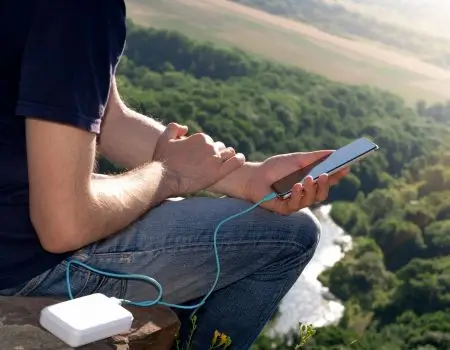
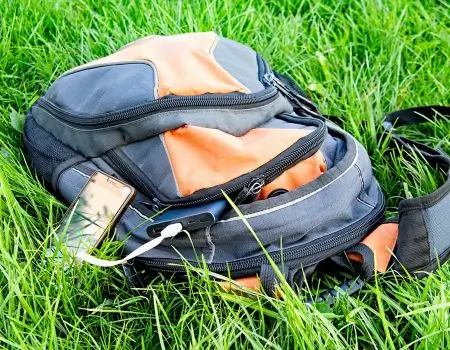
Power Banks for Outdoors, Camping and Hiking. Extend the runtime of your phones and other electronic gadgets. A crucial element in maintaining communication with the outside world.
A camping power bank is a convenient and portable device specifically designed to store electrical energy. It can be used to recharge various electronic devices like smartphones, tablets, cameras, Camping LED Lights, and GPS units while enjoying the great outdoors.
With its compact design and functionality, it ensures that you stay connected and powered up during your outdoor adventures when traditional electrical outlets are unavailable. Imagine running out of juice when you most need it.
There are a few key terms you should know: capacity, output, and input. Capacity refers to the amount of energy a power bank can store, usually measured in milliampere-hours (mAh).
Output is the rate at which the power bank can transfer energy to your device, typically measured in amperes (A). Input is the rate at which the power bank can recharge itself, also measured in amperes (A).
Choosing the Right Capacity for Your Camping Needs
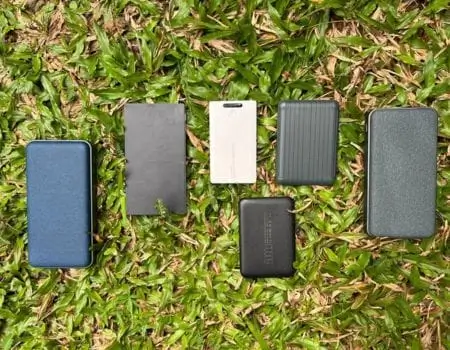
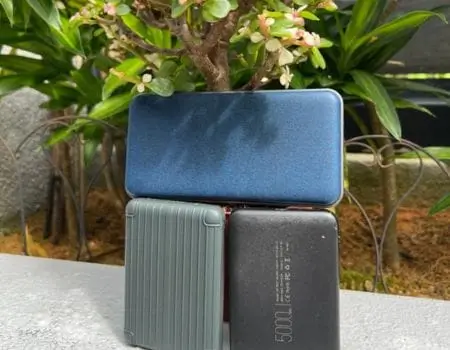
Different capacities of power banks for camping - From 20,000mAh, 10,000mAh, 5,000mAh and 3,000mAh | 2nd Photos show the size different between the 20,000mAh, 10,000mAh and 5,000mAh Power Banks capacities.
Now, you can read the rest of this section to understand how to determine and calculate the right capacity.
One of the most important factors to consider when choosing a camping power bank is its capacity.
To calculate the capacity of the power bank required for your weekend camping trip, let's use this example:
If you're using an iPhone 13, you'll likely need to recharge it twice during your camping trip over the weekend.
The iPhone battery is 3,200mAh (iPhone rated it for Video playback Up to 19 hours)
2 Times power charging = 3,200*2 = 6,400mAH
Most power banks have an efficiency of an average of 85%
Required Power Bank Capacity = Capacity Required / 0.85 = 7,530mAH
In this example, you can look for the nearest or the next higher capacity battery such as a 10,000mAh power bank which should be sufficient with spare.
In some cases, power banks or other electronic devices such as cameras or GPS are rated in Watt-Hours (Wh).
Capacity (Wh) = (Capacity mAH * Voltage v)/1000
iPhone voltage assumed 4.3v
Capacity Required (Wh) = (6,400mAH * 4.3v)/1000 = 27.5 Wh
Once you have mastered the art of calculating the required capacity of a power bank, selecting the perfect one becomes a breeze. An array of power bank capacities ranging from as low as 3,000mAh to a whopping 30,000mAh await your consideration. The popular capacity is 20,000 mAh (around 74Wh).
Decoding Power Bank Outputs: What You Need to Know About Charging Speeds
Otherwise, you should read this.
Another crucial factor when choosing a power bank for your camping trip is its output. This refers to how fast the power bank can transfer energy to your device. Generally, there are three types of outputs: 1A, 2A, & 3A.
1A output is considered sufficient for charging phones, cameras, or other small electronic devices. However, if you have a larger device like a tablet or laptop, you may want to opt for a power bank with 2A or 3A output to ensure faster charging times.
It's important to note that the output speed also depends on your device's input speed. So if your device only has a 1A input, using a 2A output power bank won't necessarily make a difference in charging time.
For fast charging, the power rating of the power bank must be considered. Typically power bank with a rating of 20W or higher is capable of fast charging. As in the iPhone 13 example, it can charge up to 50% charge in 30 minutes. Such output requires a USB Type C port with a USB Type C cable.
For power banks with multiple charging ports, you need to know that the sum of the total output, if all the ports are used at the same time, is the rated output stated on the power bank.
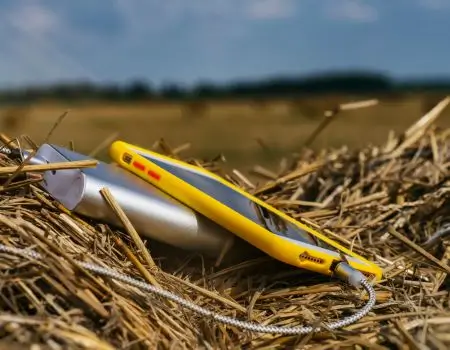
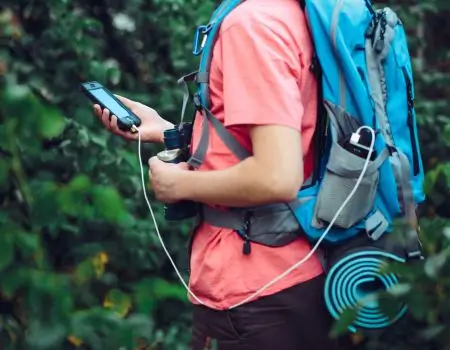
The usefulness of power banks in the outdoor cannot be ignored, especially in powering up your handphone which is a crucial and life saving elements of survival. It is small and lightweight and can be stored easily, such as in your backpack. I am a backpack guy, and from experience, the little extra weight will come in extremely useful in the even of emergency, such as being lost in the wilderness or you need medical attention urgently.
Size Matters: Finding the Perfect Compact Power Bank for Camping
When it comes to camping and hiking, every ounce counts. That's why finding a compact and lightweight power bank is essential. Many power banks come in different shapes and sizes, but the most popular are usually pocket-sized and weigh less than a pound.
If you're looking for an ultra-compact option, consider a slim power bank that can easily fit into your back pocket or backpack. But keep an eye on its capacity as well, as smaller power banks may not have enough juice to last your entire camping trip.
Another factor to consider is the durability of the power bank. Since you'll be using it in outdoor environments, opt for a rugged and water-resistant design that can withstand potential drops or spills.
Advanced Features and Considerations: Solar Charging, Pass-Through Charging, and More
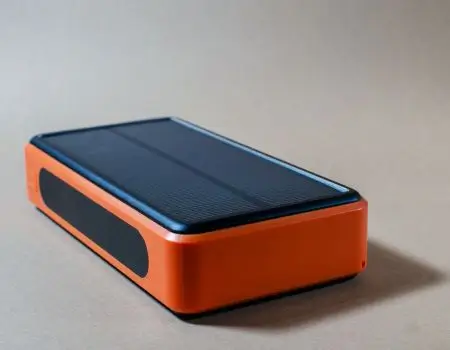
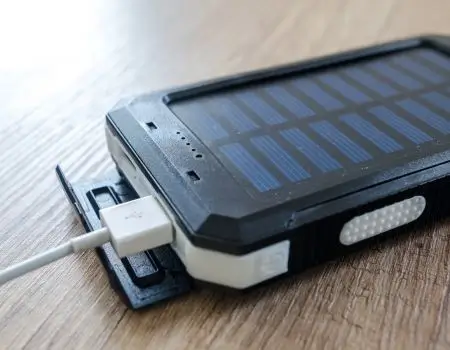
Solar Powered Power Banks - These power banks can be charged by normal power sources or through the sunlight. Extremely useful for extended stay in the great outdoors. The only negative aspect is that solar charges are slow. But then you can leave it in the sunlight all day and it will be ready for you when you need it. Remember, you may just need a little juice to power up your phone to reach emergency services.
While traditional power banks are great for camping trips, advanced features like solar charging can take your outdoor experience to the next level. Solar-powered power banks have built-in solar panels that allow them to recharge using sunlight during the day. An useful features if you are planning to camp for a longer period.
Another feature to look for is pass-through charging, which enables you to charge both your device and power bank simultaneously. This can be useful when you have limited time or outlets available. This is useful such as in the case of SUV Tent camping, you can use your SUV to charge your power bank and phone at the same time.
Some power banks also come with built-in flashlights or other handy features like LED displays that show the remaining battery life.
Understanding the basics of a camping power bank and considering factors like capacity, output, size, and additional features will help you choose the right one for your camping needs.
Wrapping it up!
That's it! Our guide to choosing the perfect power bank for your camping trip. We hope this has helped understand what to look for when shopping for a camping power bank and how to calculate the required capacity.
Remember, it's always better to have a little extra juice than not enough, so don't hesitate to go for a higher-capacity power bank if needed, such as for charging your EDC flashlight and your Rechargeable Hand Warmer when the weather gets chilly.
And don't forget to take care of your power bank by keeping it away from extreme temperatures and avoiding overcharging or dropping it. Most people overlook this.
Happy camping! Pack your bags and get ready for an unforgettable experience in the great outdoors! Start exploring the great outdoors with peace of mind knowing that you'll always stay connected and powered up with your trusty camping power bank by your side.
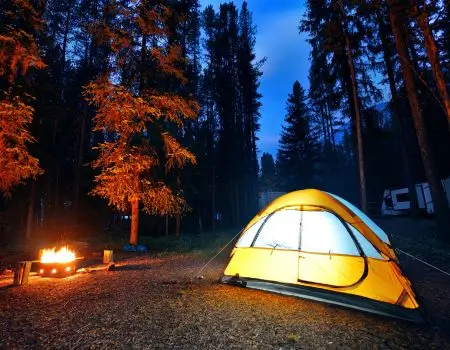

Camping is a great way to enjoy the great outdoors. With power banks and other improvements in technology, it is becoming a popular ways of living the great outdoors life.
Disclosure: When you buy through links on our site, we may earn an affiliate commission from our partners at no additional cost to you. Thank you for your support!
Living the Great Outdoor with Trusted Outdoor Gear!
Resources
How to determine the actual mAH of a power bank?
Analysis of Specified Capacity in Power Banks




